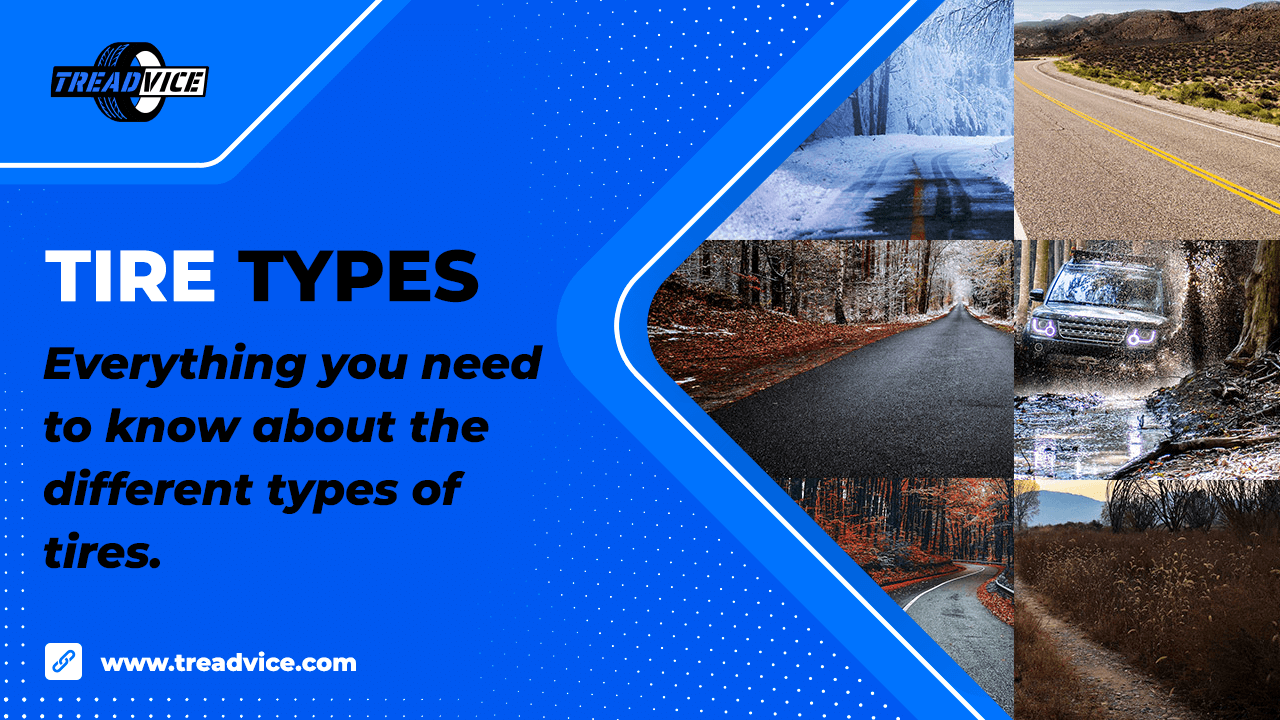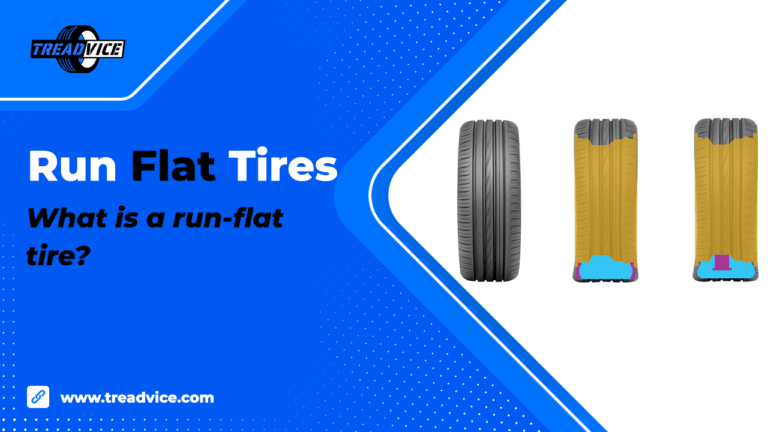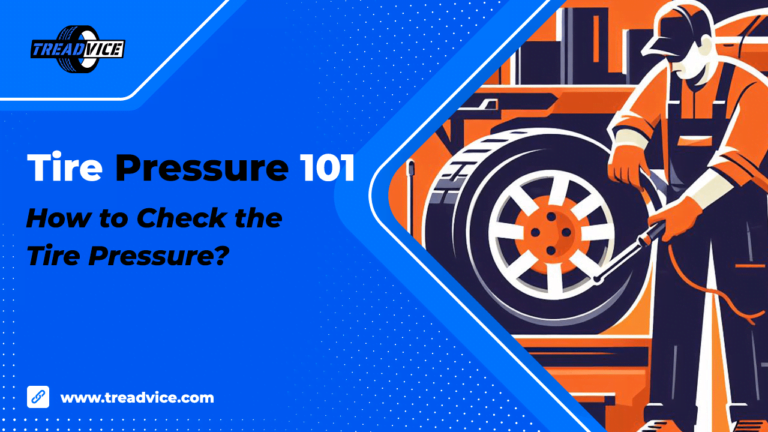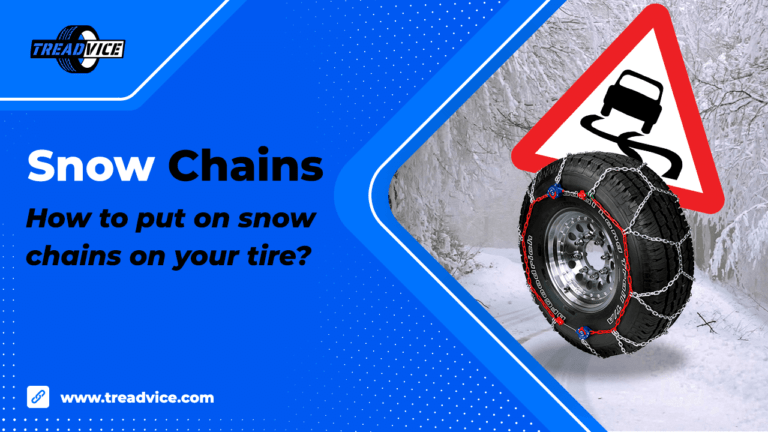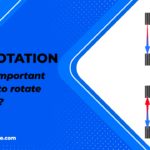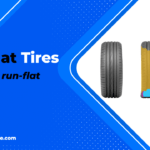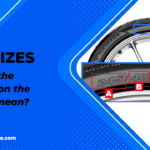Like we usually do, let’s start with an example from everyday driving: It’s a cold winter morning, and you’re running a bit late for work. You hastily jump into your car, still half-asleep, and hit the road. As you approach a slippery turn, your car decides to do its own rendition of the ice capades. You find yourself grabbing the steering wheel and that’s when you realize that your car’s tires might be the reason you’re sliding around like a penguin on a skating rink.
Have you ever experienced a tire-slipping moment that made you question your life choices? Guess what, we have all been in a situation like this, and it can be pretty terrifying, can’t it?. That’s why understanding different tire types is crucial for a safer and more enjoyable driving experience. In this guide, we’ll unravel the mystery behind tires and equip you with the knowledge you need to make informed choices.
We’ll check different tire types, their properties, and discuss when to use them. Whether you’re cruising through a hot summer day, braving the icy roads of winter, or exploring off-road terrains, there’s a tire type out there that suits your needs like a perfect pair of shoes for Cinderella.
Table of Contents
Tire Types for Different Seasons
Do you want to conquer the roads? If you do, then it’s crucial to have the right tires for the right season. Let’s take a closer look at the tire types designed to tackle various weather conditions and keep you on the straight and narrow.
Summer Tires: Embrace the Heat!
Ah, summer—the season of sun, road trips, and beachside adventures. Just like you wouldn’t wear a heavy winter coat on a scorching day, you need tires that can handle the heat. Summer tires, also known as performance tires, are designed with warmer weather in mind.
Benefits: Summer tires excel in warm conditions due to their unique rubber compound and specialized tread pattern. They provide exceptional grip on both dry and wet roads, offering improved braking performance and precise handling. So if you want to have an enjoyable driving experience throughout the summer moths, these tires are the way to go!
Characteristics: You’ll notice that summer tires have wider tread blocks and shallower grooves, allowing for maximum contact with the road surface. This design enhances traction and responsiveness, making those winding roads feel like a racetrack.
When to Use Them: Summer tires are ideal for hot climates or during the summer season when the temperature consistently stays above 45°F (7°C). However, it’s important to switch to a more suitable tire type when the temperature drops, as summer tires can become less effective in cold conditions.

Illustration: Summer tire tread pattern on Yokohama ADVAN Sport® V105
Winter Tires: Winter is coming!
Winter, the season of snowball fights and cozy nights by the fire. But it’s also the time when the roads become icy and treacherous. That’s where winter tires come to the rescue, offering superior performance in cold conditions.
Advantages: Winter tires are specially designed to tackle snowy, icy, and slushy roads. They feature a unique rubber compound that remains pliable even in freezing temperatures, providing better grip and traction. The deeper tread pattern with sipes and biting edges enhances traction on slippery surfaces, allowing for shorter braking distances and improved control.
Features: Look closely, and you’ll see that winter tires have deeper and more pronounced tread grooves, along with tiny slits called sipes. These elements work together to bite into the snow and improve grip, ensuring you stay on track even when the world around you turns into a winter wonderland.
Why They Excel in Cold Conditions: Unlike other tire types, winter tires remain flexible and maintain their grip even when the temperature drops below freezing. They are specifically engineered to perform best in cold weather, making them a must-have for anyone facing icy roads or regular snowfall.

Illustration: Winter tire tread pattern on Yokohama BluEarth Winter® V905
All-Season Tires: The Jack of All Trades
All-season tires are probably the best option for you if you live in an area with moderate climatic variations or simply you don’t have the time to keep swapping those tires ( you go rather with the set-it-and-forget-it method). As their name suggests, these tires are designed to provide decent performance in different weather conditions throughout the year.
Pros: All-season tires offer convenience and versatility. They work well in a almost all weather conditions, including dry, wet, and mild winter ones. These tires provide a balanced performance, combining aspects of both summer and winter tires. With all-season tires, you won’t have to worry about switching between tire types as frequently.
Cons: While all-season tires provide decent performance in various conditions, they do come with some compromises. They may not offer the same level of grip and traction as specialized summer or winter tires. In extreme weather conditions, such as heavy snow or scorching heat, they may not deliver optimal performance.
Suitability for Various Weather Conditions: All-season tires are a great choice for areas with mild climate changes or for drivers who don’t experience extreme weather conditions. They are designed to handle a variety of road conditions, making them a practical option for year-round use.
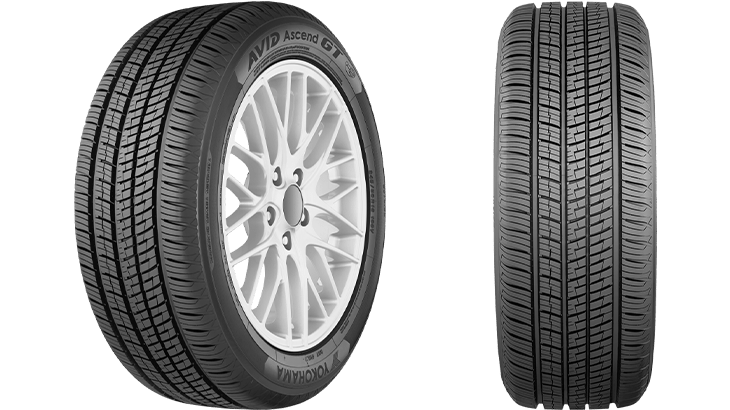
Illustration: All-Season tire tread pattern on Yokohama AVID Ascend GT®
All-Weather Tires: Versatility at its Finest
Don’t confuse all-weather tires with all-season tires—they’re not the same. All-weather tires are a newer breed, offering the best of both worlds. These tires are designed to perform well in both summer and winter conditions, making them a great option for drivers facing unpredictable weather patterns.
Differences from All-Season Tires: Unlike all-season tires, all-weather tires carry the three-peak mountain snowflake symbol (3PMSF) indicating their ability to handle severe winter conditions. They are engineered with a unique rubber compound and advanced tread design that provides good traction and grip on both dry and wet roads, as well as in light to moderate winter conditions.
Features and Versatility: All-weather tires strike a balance between the characteristics of summer and winter tires. They have a tread pattern optimized for wet and dry grip, while also offering enhanced performance in light snow and icy conditions. With all-weather tires, you can enjoy year-round convenience without compromising safety.
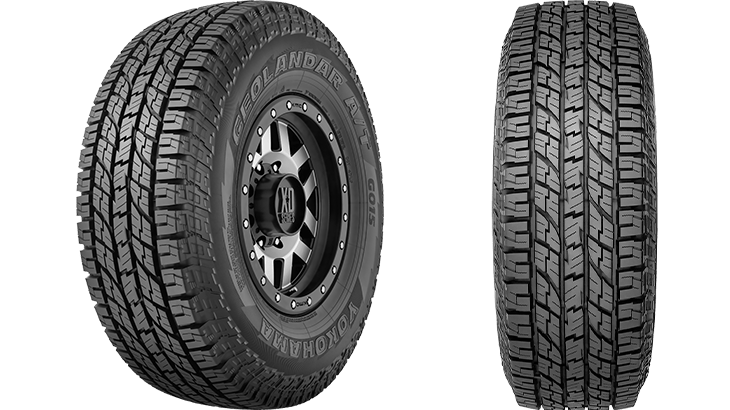
Illustration: Winter tire tread pattern on Yokohama GEOLANDAR® A/T G015
Tire Types by Performance
When it comes to tire performance, different driving needs call for different tire types. So, let’s talk a little bit about tire performance and explore the options available to enhance your driving experience.
Passenger Tires: For the Everyday Driver
Passenger tires are the workhorses of the road, designed to deliver a comfortable and reliable driving experience for everyday commuting and general use.
Features and Benefits: These tires prioritize a smooth and quiet ride, offering excellent handling, stability, and traction on regular road surfaces. They are optimized for fuel efficiency, promoting better mileage and reducing rolling resistance. Passenger tires strike a balance between performance, longevity, and affordability.
Suitability: Passenger tires are well-suited for regular commuting, city driving, and highway cruising. They provide a comfortable ride and are an excellent choice for drivers who prioritize comfort and longevity over aggressive performance.
High-Performance and Ultra High-Performance Tires: Unleash Your Inner Speed Demon
For those seeking an adrenaline rush and spirited driving experience, high-performance and ultra high-performance tires are the go-to choice.
Features and Benefits: These tires are designed for enhanced grip, precise handling, and exceptional cornering capabilities. They boast specialized rubber compounds and advanced tread patterns that provide optimal traction and responsiveness, especially at high speeds. High-performance and ultra high-performance tires deliver the thrill of the road, making every twist and turn an exhilarating adventure.
Suitability for Sporty Driving: If you have a need for speed, these tires are your best bet. They excel in dry conditions, offering superior grip and maneuverability. Whether you enjoy spirited drives on winding roads or track days, high-performance and ultra high-performance tires will elevate your driving experience to new heights.
Touring Tires: Comfort Meets Long-Distance Adventures
Planning a road trip? Touring tires are your trusted companions for long-distance journeys, offering a balance of comfort, performance, and durability.
Comfort-Oriented Features: Touring tires prioritize a smooth and quiet ride, minimizing road noise and vibrations. They are designed to absorb road imperfections, ensuring a comfortable experience for both the driver and passengers. With touring tires, you can enjoy a serene and pleasant drive, even on those never-ending highways.
Benefits for Long-Distance Driving: These tires provide good traction on both dry and wet roads, promoting safety and stability. They are known for their durability, allowing you to tackle high mileage without compromising performance. If you frequently embark on road trips or spend hours behind the wheel, touring tires will keep you comfortable and at ease throughout your journey.
All-Terrain Tires: Conquer the Great Outdoors
For adventurers and off-road enthusiasts, all-terrain tires are the perfect companion. These rugged warriors are designed to tackle a variety of terrains and provide durability and traction where the pavement ends.
Durability and Off-Road Capabilities: All-terrain tires feature reinforced sidewalls, sturdy construction, and aggressive tread patterns with larger voids. This design provides excellent traction on unpaved surfaces, such as gravel, dirt, mud, or rocky terrains. Whether you’re exploring remote trails or venturing into the wilderness, all-terrain tires will keep you moving forward with confidence.
When to Choose Them: If you frequently find yourself off the beaten path or in need of extra grip and traction, all-terrain tires are your best bet. They are ideal for SUVs, trucks, and other vehicles that venture off-road. However, keep in mind that all-terrain tires may sacrifice some on-road comfort and noise reduction due to their more aggressive tread pattern.
Performance vs. Comfort Trade-Offs: Finding the Right Balance
When selecting tires, there’s often a trade-off between performance and comfort. High-performance tires may deliver thrilling performance but sacrifice some comfort, while touring tires prioritize comfort but may not offer the same level of performance as high-performance options. Consider your driving preferences, road conditions, and vehicle type when striking the right balance between performance and comfort. It’s all about finding the sweet spot that suits your needs and driving style.
Tire Types for Different Terrain
Tires are the unsung heroes that connect your vehicle to the ground, and choosing the right tires for specific terrains can make all the difference. Let’s explore tire types designed to conquer different terrains and ensure optimal performance in various conditions.
Highway Tires: Smooth Cruising on the Pavement
For the everyday commuter and long-distance traveler, highway tires are the go-to option. These tires are engineered to provide a comfortable and efficient ride on regular road surfaces.
Features and Benefits: Highway tires are designed with a focus on fuel efficiency, low rolling resistance, and a quiet ride. They feature a tread pattern optimized for smooth performance on highways, offering stability, good traction, and even wear. Highway tires excel in delivering a comfortable and quiet driving experience, making them ideal for regular road use.
Suitability for Regular Road Use: If your driving primarily consists of commuting, city driving, or highway cruising, highway tires are the perfect fit. They provide a balanced performance for everyday driving, ensuring a smooth and efficient ride.
Off-Road Tires: Conquer the Unpaved Path
When the pavement ends, off-road tires come into play. These tires are designed to tackle challenging off-road terrains and provide maximum traction and durability.
Tread Patterns and Traction: Off-road tires feature aggressive tread patterns with large voids, deep grooves, and chunky tread blocks. This design allows them to bite into loose surfaces such as gravel, dirt, and sand, providing enhanced traction and grip. The reinforced sidewalls offer added protection against cuts and punctures when navigating rough terrain.
Performance on Unpaved Surfaces: Off-road tires excel in off-road conditions, providing the necessary traction to conquer challenging terrains. Whether you’re exploring rocky trails, venturing through muddy paths, or crossing sandy dunes, off-road tires will help you maintain control and conquer the great outdoors.
Mud Tires: Go through the Muck and Mire
When faced with muddy conditions, mud tires are the go-to choice. These tires are specifically designed to tackle muddy terrains and provide superior traction in the muck.
Characteristics and Benefits: Mud tires have a unique tread pattern with large, widely spaced lugs and deep channels. This aggressive design allows them to self-clean, shedding mud and debris from the tread as you drive. The open voids between the tread blocks provide enhanced traction, preventing the tire from getting clogged with mud. Mud tires excel in gripping muddy surfaces, ensuring you stay in control even in the muddiest of conditions.
When to Opt for Mud Tires: If you frequently encounter muddy terrains or participate in off-road activities where mud is a common obstacle, mud tires are a must-have. Their specialized design and superior traction in muddy conditions will help you navigate through challenging situations with ease.
Snow Tires: Conquer the Winter Wonderland
When winter arrives, having the right tires can make a world of difference in maintaining control on snow-covered roads. Snow tires, also known as winter tires, are specifically designed to provide enhanced grip and traction in snowy and icy conditions.
Specialized Features for Winter Performance: Snow tires feature a unique rubber compound that remains flexible in cold temperatures, providing better grip on icy and snowy surfaces. They have deeper tread patterns with dense siping, which are tiny slits in the tread blocks. These sipes enhance traction and biting edges, allowing the tire to grip the snow and ice more effectively. Snow tires deliver improved braking performance, cornering stability, and overall control in winter conditions.
Enhanced Grip in Snowy Conditions: Snow tires are essential for regions that experience harsh winters with significant snowfall. When the temperature drops and snow covers the roads, snow tires give you the confidence to navigate safely through the winter wonderland.
Spare Tire Types: Be Prepared for the Unexpected
Having a spare tire in the trunk can be incredibly helpful in case of a roadside emergency. Let’s explore the different types of spare tires available and their role in getting you back on the road when unexpected tire issues occur.
Full-Size Spare Tires: A Reliable Backup
A full-size spare tire is an exact match to the tires on your vehicle, both in size and type. These spare tires offer several advantages but also come with a few drawbacks.
Advantages: A full-size spare tire’s main benefit is that it offers similar performance, handling, and compatibility to your regular tires. It can be used for an extended period, allowing you to continue your journey without compromising on driving experience or speed limits.
Drawbacks: Full-size spare tires take up additional space in your vehicle, occupying trunk space or mounting on the exterior. They also tend to be heavier and bulkier, affecting fuel efficiency and handling. Additionally, acquiring a full-size spare can be costlier than other spare tire options.
Considerations: Full-size spare tires are ideal for long trips or if you frequently drive in remote areas where tire availability may be limited. They are suitable for situations where you want a seamless replacement without worrying about mismatched tires.
Temporary Spare Tires (Donuts): A Quick Fix
Temporary spare tires, commonly known as donuts, are compact and lightweight spare tire options designed for short-term use in case of emergencies.
Benefits: Donut spare tires are space-saving and easier to store due to their compact size. These spares are also lighter meaning that they are easier to handle and operate. Donuts are usually less expensive than full-size spares, making them a budget-friendly option.
Limitations: Temporary spare tires are not meant for extended use or long distances. They are designed to provide enough mobility to reach the nearest tire service center for a proper replacement. Donuts have limited speed and mileage ratings, so you’ll need to drive at reduced speeds and avoid driving long distances on them.
Temporary Use Only: Donut spare tires are intended as a temporary solution to get you back on the road. It’s crucial to replace them with a regular tire as soon as possible to ensure optimal safety and performance.
Run-Flat Tires: Extended Mobility Assurance
Run-flat tires are a modern innovation designed to provide extended mobility even after a puncture or loss of air pressure.
Features and Benefits: Run-flat tires are engineered with reinforced sidewalls that allow them to support the weight of the vehicle, even when deflated. These tires can provide continued driving for a limited distance (typically up to 50 miles) at a reduced speed, giving you time to reach a service station or safety.
Considerations for Choosing Run-Flat Tires: Run-flat tires provide peace of mind and eliminate the need for carrying a spare tire altogether. They are ideal for drivers who prioritize convenience and don’t want to deal with changing a tire on the side of the road. However, it’s crucial to keep in mind that run-flat tires often cost more than regular tires and might provide a slightly stiffer ride.
Comparisons: Choosing the Right Tire for Your Needs
Several variables need to be taken into account when choosing the appropriate tires for your car. Let’s compare different tire types based on key criteria to help you make an informed decision that suits your specific needs.
Performance
- Summer Tires: Designed for excellent dry and wet performance, offering enhanced handling and cornering capabilities.
- Winter Tires: Deliver superior traction on snow and ice, ensuring optimal braking and maneuverability in cold conditions.
- All-Season Tires: Provide a balance between summer and winter performance, suitable for a wide range of weather conditions.
- All-Weather Tires: Designed to perform well in both summer and winter conditions, offering versatility and convenience.
Longevity
- Summer Tires: Typically have a shorter lifespan due to their softer rubber compound and specialized performance features.
- Winter Tires: With their deeper treads and specific rubber compounds, they can wear more quickly on dry pavement.
- All-Season Tires: Strike a balance between performance and longevity, offering decent tread life for various conditions.
- All-Weather Tires: Designed to provide good tread life and durability across different seasons.
Traction
- Summer Tires: Offer excellent traction on dry and wet roads but may struggle in snowy or icy conditions.
- Winter Tires: Provide exceptional traction on snow and ice, allowing for confident driving in harsh winter weather.
- All-Season Tires: Offer adequate traction in a range of weather conditions but may not excel in extreme conditions.
- All-Weather Tires: Designed to provide reliable traction in both summer and winter conditions, ensuring safety and control.
Price
- Summer Tires: Generally more affordable than specialized winter tires or high-performance options.
- Winter Tires: May have a higher upfront cost due to their specialized design and materials.
- All-Season Tires: Offer a balance between performance and price, providing good value for year-round use.
- All-Weather Tires: Fall within the mid to higher price range, offering the convenience of year-round performance.
It’s important to consider your specific driving needs, local climate, and budget when comparing tire types. Consulting with a tire specialist or doing thorough research can help you make an informed decision that meets your requirements.
Frequently Asked Questions (FAQs)
The lifespan of tires can vary based on factors such as driving habits, road conditions, and tire maintenance. But speaking generally, summer tires typically have a lifespan ranging from 25,000 to 40,000 miles, while winter, all-season, and all-weather tires – depending on the usage – last for 40,000 to 60,000 miles.
Tire replacement depends on various factors, including tire wear, age, and driving conditions. As a general guideline, tires should be replaced when the tread depth reaches 2/32 of an inch or if you notice signs of uneven wear, cracking, or bulges. It’s also recommended to replace tires every 6 to 10 years, even if they appear to have sufficient tread.
It is generally recommended to avoid mixing different tire types on the same vehicle. Each tire type is designed with specific characteristics and performance capabilities. Mixing tire types can result in uneven handling, compromised safety, and reduced performance.
While all-season tires provide decent performance in various weather conditions, they may not offer the same level of grip and traction as dedicated winter tires in severe winter conditions. If you frequently encounter snowy or icy conditions, switching to winter tires can significantly improve your safety and control on the road.
All-season tires are designed to provide decent performance in various weather conditions, including light snow. However, their performance may not match specialized winter tires in severe winter conditions. If you frequently encounter harsh winters with heavy snowfall, switching to dedicated winter tires can provide superior traction and safety.
Spare tires, whether full-size or temporary, are intended for emergency use only. They are not designed for extended use or long distances. It’s important to replace a spare tire with a regular tire as soon as possible to ensure optimal safety and performance.
Regular tire maintenance includes checking tire pressure, inspecting tread depth, and ensuring proper wheel alignment. It’s crucial to maintain the recommended tire pressure, rotate tires regularly, and visually inspect for any signs of damage or wear. Proper maintenance contributes to improved tire performance, longevity, and safety.
When selecting tires, consider factors such as your driving needs, climate, and budget. Assess the performance characteristics, traction capabilities, and suitability for your vehicle type. Consulting with a tire specialist or reviewing tire manufacturer recommendations can help you make an informed decision.
Electric vehicles tend to have higher torque levels due to instant power delivery. This can cause increased tire wear. Look for tires specifically designed for electric vehicles, which often have reinforced sidewalls and low rolling resistance to maximize efficiency and provide optimal performance.
That’s a wrap on our tire types guide! From the sunny highways to the cold tundra, we’ve covered it all. Now it’s time for you to make a tire-rific choice and hit the road with confidence! Selecting the right tires is like finding the perfect dance partner for your vehicle. Whether you need summer sass, winter wizardry, or year-round versatility, there’s a tire type that’s got your back (or should we say, your wheels!).
Remember, tire safety and performance are crucial for a smooth and enjoyable driving experience. If you have specific concerns or questions about tire types, it’s best to consult with a tire professional for personalized guidance.
Don’t get stuck with summer tires during the winter or compromise on off-road adventure with some highway rubber. Match your tires to the driving conditions and let the good times roll!
